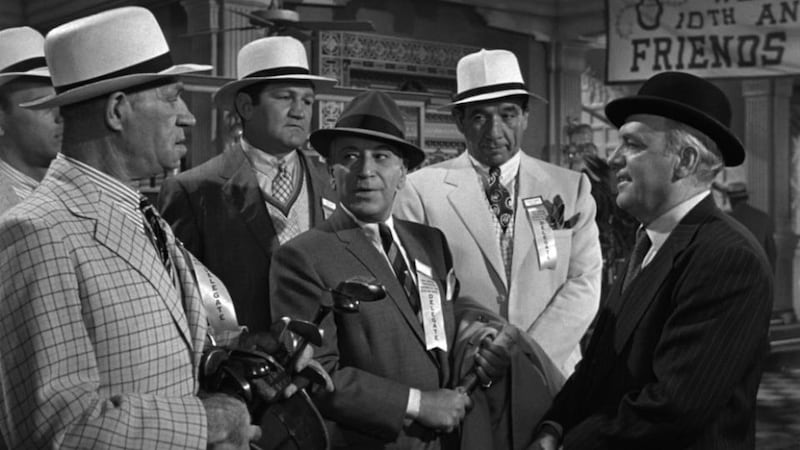How hot do we like it? Let us begin by dipping a toe in the most scalding water.
Over half a century after Billy Wilder’s most popular comedy first spilt sides, the central female character (“central unambiguously female character”, we should perhaps say) doesn’t slip across the screen quite so smoothly as she used to. Isn’t there something a little creepy about Marilyn Monroe’s baby-girl temptress? Shouldn’t we worry that the object of desire needs to behave like a swollen child?
Before the Copper-Bottomed-Classic Police arrest us for Crimes Against Celebrity, it should be clarified that it's no harder to set aside Monroe's uneasy (though wonderfully timed) performance than it is to tolerate the swaggering racism of John Wayne's Ethan Edwards in the near- contemporaneous The Searchers. Some Like It Hot may begin with a mass murder, but it's one of Wilder's sunnier, less cynical comedies.

As you surely don't need to be told, Jack Lemmon (the worried one) and Tony Curtis (the swaggering one) are forced to pull on dresses to avoid annihilation by gangsters. As is usually the case in such situations, they and both end up falling for the prettiest girl in the vicinity. Some of the best train scenes in any comedy lead onto some of the best beachside scenes in any comedy.
Unlike Dustin Hoffman in Sydney Pollack's Tootsie, which emerged 24 years later, Lemmon and Curtis make no serious efforts to convince the audience they could pass for female. The ludicrousness of their high-pitched voices and overworked wiggle is part of the joke.
Still, in other ways, Some Like It Hot is that bit funkier than its successor. The famous final line offers a quirky twist on all that has gone before. The threat of very real violence adds weight to the comedy. And Curtis's cheeky decision to adopt Cary Grant's accent allows Hollywood to send itself up in a (as they wouldn't have then said) surprisingly postmodern fashion. Nobody talks loike thet!










